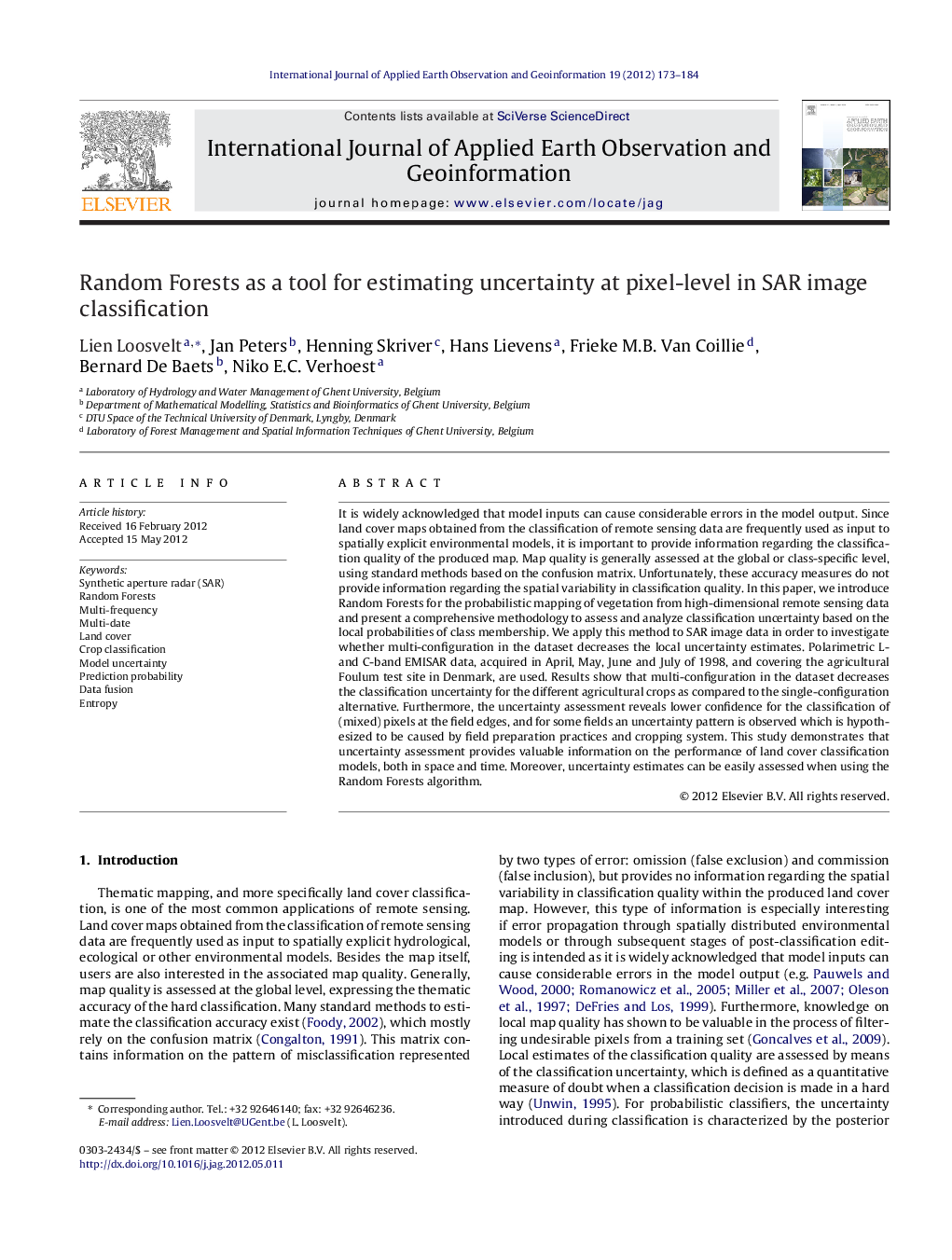| Article ID | Journal | Published Year | Pages | File Type |
|---|---|---|---|---|
| 4464981 | International Journal of Applied Earth Observation and Geoinformation | 2012 | 12 Pages |
It is widely acknowledged that model inputs can cause considerable errors in the model output. Since land cover maps obtained from the classification of remote sensing data are frequently used as input to spatially explicit environmental models, it is important to provide information regarding the classification quality of the produced map. Map quality is generally assessed at the global or class-specific level, using standard methods based on the confusion matrix. Unfortunately, these accuracy measures do not provide information regarding the spatial variability in classification quality. In this paper, we introduce Random Forests for the probabilistic mapping of vegetation from high-dimensional remote sensing data and present a comprehensive methodology to assess and analyze classification uncertainty based on the local probabilities of class membership. We apply this method to SAR image data in order to investigate whether multi-configuration in the dataset decreases the local uncertainty estimates. Polarimetric L- and C-band EMISAR data, acquired in April, May, June and July of 1998, and covering the agricultural Foulum test site in Denmark, are used. Results show that multi-configuration in the dataset decreases the classification uncertainty for the different agricultural crops as compared to the single-configuration alternative. Furthermore, the uncertainty assessment reveals lower confidence for the classification of (mixed) pixels at the field edges, and for some fields an uncertainty pattern is observed which is hypothesized to be caused by field preparation practices and cropping system. This study demonstrates that uncertainty assessment provides valuable information on the performance of land cover classification models, both in space and time. Moreover, uncertainty estimates can be easily assessed when using the Random Forests algorithm.
► We evaluate the land cover map quality for different multi-configurations in EMISAR imagery. ► We apply the non-parametric and probabilistic Random Forests classifier. ► The use of multi-configuration imagery increases the classification accuracy up to 40%. ► The pattern in maximum probability is inversely related to the pattern in entropy. ► Multi-configurations that result in similar accuracies also produce similar uncertainties.
